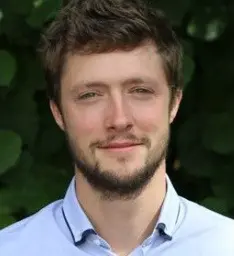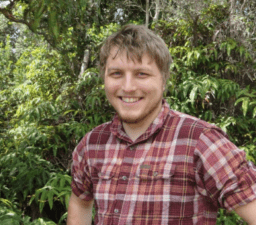The U.S. Department of Energy Nuclear Science User Facilities (NSUF) awarded grants to three University of Wisconsin-Madison researchers for their rapid turnaround experiment (RTE) projects in 2018.
 Adrien Couet
Adrien Couet
All of the research proposals submitted by UW-Madison researchers were awarded funding. The recipients, all members of nuclear engineering and engineering physics Assistant Professor Adrien Couet’s research group, include PhD students Michael Moorehead and Zefeng Yu and assistant scientist Mohamed Elbakhshwan.
 Mohamed Elbakhshwan
Mohamed Elbakhshwan
NSUF competitively selected a total of 33 RTE projects from high-quality proposals submitted during the solicitation period. RTE project teams include 19 principal investigators from universities, 10 from national laboratories, three from foreign institutions, and one from industry who will work with the NSUF team on their proposed experiments.
First established at Idaho National Laboratory, NSUF is the nation’s only user facility overseen by the Office of Nuclear Energy. NSUF provides research teams with access to reactor, post-irradiation examination, high-performance computing, and beamline capabilities at a diverse mix of affiliated partner facilities in university, national laboratory and industry institutions across the country at no cost to the user.
Couet’s research focuses on accelerating the development of alloys that can sustain the harsh environments of a nuclear reactor core. His research integrates high-throughput experiments with fundamental understanding and modeling of irradiation and corrosion mechanisms.
 Michael Moorehead
Michael Moorehead
The next generations of nuclear reactors require materials that are resistant to radiation damage and corrosion in harsh environments (liquid metal, gas or molten salts, depending on the reactor design) at relatively high temperatures for extended periods of time. High entropy alloys (HEAs) are a new class of alloy systems, and some HEAs possess many attractive properties such as high strength, thermally stable microstructure, low inter-diffusion and high oxidation resistance. Therefore, Couet says HEAs are a natural choice for developing new materials that would ultimately enable advanced nuclear reactors.
For his project, Elbakhshwan will study the behavior of promising HEAs under radiation damage to enhance our fundamental understanding of irradiation effects in these advanced alloys and to assess their potential applications in future nuclear systems. He says the results will provide important insight into how radiation damage development in HEAs compares to conventional steel alloys. Elbakhshwan will perform experiments in the University of Wisconsin – Tandem Accelerator Ion Beam, using ions to mimic radiation damage environment in nuclear reactors.
 Zefeng Yu
Zefeng Yu
Moorehead will also investigate HEAs—specifically for use as structural materials in next-generation sodium-cooled fast reactors. These advanced nuclear reactors will have enhanced safety features, higher fuel efficiencies and longer operating times than today’s reactor fleet. Moorehead’s RTE project focuses on characterizing the atomic-scale microstructural changes caused by irradiation damage in select HEA materials, previously irradiated by Elbakhshwan, using state-of-the-art equipment available at the Center for Advanced Energy Studies.
On the other hand, Yu’s research focuses on re-evaluating current fuel cladding design in order to maximize safety and increase fuel utilization for use in the current generation of nuclear reactors. Based on a previous successfully completed RTE project, Yu is continuing to study the effect of irradiation on current fuel cladding designs. He uses proton irradiation to mimic neutron irradiation and will characterize the alloy microstructural damage using a Titan Themis 200 Transmission Electron Microscope (TEM/STEM) with Super-X Energy Dispersive Spectroscopy (EDS) at the Irradiated Materials Characterization Laboratory at Idaho National Laboratory.
In addition, NSUF has awarded projects to other institutions, which are using the University of Wisconsin-Madison Ion Beam Laboratory, housed in the Department of Nuclear Engineering and Engineering Physics. This additional NSUF funding helps the Ion Beam Laboratory maintain its position as a top-ranked user facility to conduct irradiation damage studies in the United States.